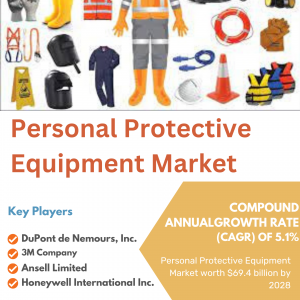The report "Feminine Hygiene Products Market by Nature (Disposable, Reusable), Type (Sanitary Napkins, Panty Liners, Tampons, Menstrual Cups), Region (Asia Pacific, North America, Europe, Middle East and Africa, South America) - Global Forecast to 2028", size is projected to grow from USD 24.6 billion in 2023 to USD 32.2 billion by 2028, at a CAGR of 5.5% from 2023 to 2028. Feminine hygiene products are designed to help women maintain cleanliness, comfort, and health during their menstrual cycle and for general vaginal care. These products manage menstrual flow, maintain personal hygiene, and prevent discomfort or odor. The rise in awareness about feminine hygiene management and the increasing disposable income of females drives the market growth.
Browse in-depth TOC on “Feminine Hygiene Products Market”
264 – Tables
45 – Figures
230 – Pages
Download PDF Brochure: https://www.marketsandmarkets.com/pdfdownloadNew.asp?id=69114569
The disposable segment accounted for the largest feminine hygiene products market share in 2022.
By nature, the disposable category dominated the market share in 2022. This category encompasses feminine hygiene products like sanitary pads, tampons, and panty liners. Over the past few decades, disposable absorbent feminine hygiene products have largely supplanted traditional methods of managing menstruation worldwide. These products consist of internal tampons, full-sized sanitary napkins or towels for menstruation, and panty shields designed to safeguard undergarments from light menstrual flow, spotting, or vaginal discharge while ensuring cleanliness. The significant presence of the disposable segment can be attributed to the widespread awareness and extensive use of these convenient feminine hygiene products.
In 2022, the sanitary pads category dominated the market share for feminine hygiene products.
In terms of product type, the sanitary pads category held the most significant market share in 2022. This prominence can be ascribed to the heightened awareness of sanitary pads compared to other feminine hygiene products and their wide accessibility. Notable brands offering sanitary napkins encompass Kotex, Camelia, Always, Just., This is L, Stayfree, Carefree, o.b., and Lil-lets.
Request Sample Pages: https://www.marketsandmarkets.com/requestsampleNew.asp?id=69114569
Asia Pacific accounted for the largest share of the global feminine hygiene products market in 2022.
In 2022, the Asia Pacific region held the most significant portion of the feminine hygiene products market. The countries under study in this market segment encompass China, India, Japan, Indonesia, Malaysia, and Thailand. The growth in disposable income, rapid urbanization, and increased awareness of menstrual hygiene management are key drivers of the feminine hygiene products market in this region. Additionally, there has been a noteworthy development in India, where the government revealed a commitment to invest USD 160 million in the Suvidha initiative. This initiative aims to ensure widespread access to sanitary napkins in rural areas of the country. Through this scheme, the government plans to provide biodegradable sanitary napkins to the masses at USD 0.00014. The government intends to involve high net-worth individuals (HNIs) and corporations to distribute sanitary napkins to underprivileged women nationwide. These developments will further boost the demand for feminine hygiene products.
Johnson & Johnson (US), Procter & Gamble (US), Kimberly-Clark (US), Essity Aktiebolag (PUBL) (Sweden), Kao Corporation (Japan), Daio Paper Corporation (Japan), Unicharm Corporation (Japan), Premier FMCG (South Africa), Ontex (Belgium), Hengan International Group Company Ltd. (China), Drylock Technologies (Belgium), Natracare LLC (US), First Quality Enterprises, Inc. (US), Bingbing Paper Co., Ltd. (China), TZMO SA (Poland), Redcliffe Hygiene Private Limited (India), The Keeper, Inc. (US), Diva International Inc. (Canada), Tosama (Slovenia), Lambi (Mexico), Cotton High Tech - Cohitech (South Africa), Edgewell Personal Care (US), Bostik (Spain), Corman (Italy) and Seventh Generation (US), among others are the key players operating in the feminine hygiene products market.






